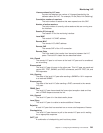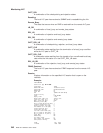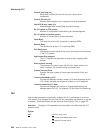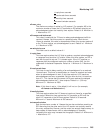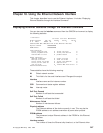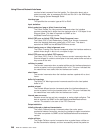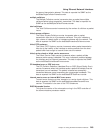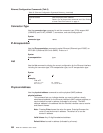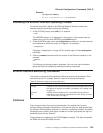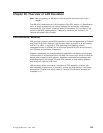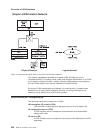the second transmission attempt. This data is exported via SNMP as the
dot3StatsSingleCollisionFrames counter.
multiple collisions
The Multiple Collisions counter increments when a packet has multiple
collisions before being successfully transmitted. This data is exported via
SNMP as the dot3MultipleCollisionFrames counter.
total collisions
The Total Collisions counter increments by the number of collisions a packet
incurs.
failed, excess collisions
The Failed, Excess Collisions counter increments when a packet
transmission fails due to 16 successive collisions. This error indicates a
high volume of network traffic or hardware problems with the network. This
data is exported via SNMP as the dot3StatsExcessiveCollisions counter.
failed, FIFO underrun
The Failed, FIFO Underrun counter increments when packet transmission
fails due to the inability of the interface to retrieve packets from the local
packet buffer fast enough to transmit them onto the network.
failed, carrier check or failed, carrier sense error
The Failed, Carrier Check counter increments when a packet collides
because carrier sense is disabled. This error indicates a problem between
the interface and its Ethernet transceiver. This data is exported via SNMP
as the dot3StatsCarrierSenseErrors counter.
CD heartbeat error or SQE test error
The CD (Collision Detection) Heartbeat Error or SQE (Signal Quality Error)
counter increments when the interface sends a packet but detects that the
transceiver has no heartbeat. The packet is treated as successfully
transmitted because some transceivers do not generate heartbeats. This
data is exported via SNMP as the dot3StatsSQETestErrors counter.
internal mac tx errors or internal MAC trans errors
Transmit errors that are not late, excessive, or carrier check collisions. This
data is exported via SNMP as the dot3StatsInternalMacTransmitErrors
counter. This statistic is the sum of the FIFO Underruns.
RISC Microcode Version:
This gives the version of the microcode running in the RISC controller of
the communications processor module.
Using Ethernet Network Interfaces
Chapter 18. Using the Ethernet Network Interface 249



